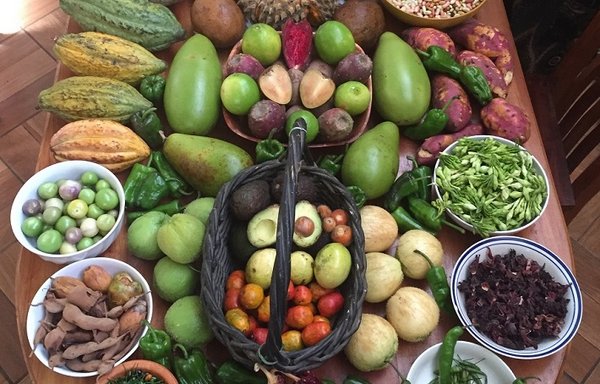- Share this article
- Subscribe to our newsletter
New index outlines agrobiodiversity’s role in food system sustainability
The first of its kind, a newly launched index calculates how well countries are conserving and using their agricultural biodiversity to improve diets, markets and production, and achieve sustainable and resilient food systems.
Compiled by Bioversity International, the Agrobiodiversity Index equips food system actors, such as governments, companies and investors, with the data needed to assess and respond to six risks that low agrobiodiversity poses to food and agriculture, namely malnutrition, poverty, climate change and variability, land degradation, pests and diseases, and biodiversity loss.
To do so, it brings together and compares data on agrobiodiversity present in markets and diets, agricultural production systems and genetic resource conservation. The first report includes an analysis of ten countries: Australia, China, Ethiopia, India, Italy, Kenya, Nigeria, Peru, South Africa and the United States of America.
For each country, the Index measures both status, i.e. how much agrobiodiversity currently exists, and progress, i.e. the country’s commitments and actions to improve the use and conservation of agrobiodiversity across diets, production and genetic resources.
Food systems must prioritise more diverse and nutritious foods
"The way food is produced and consumed today is hurting both people and the planet," says Juan Lucas Restrepo, Director General of Bioversity International. "Food systems must be re-conceived to prioritise more diverse and nutritious foods by mainstreaming biodiversity. Doing so also helps mitigate the risk of extinction of one million of the eight million estimated species on the planet this century."
The Agrobiodiversity Index aims to assess performance yearly and help countries track their progress; scores can change as countries take actions to better integrate agrobiodiversity and as the methodology and databases of the Index continue to improve.
"We are inviting feedback to help us improve the next round of measurements so that we can ensure the information generated is useful for countries to find and validate their pathways towards sustainable and resilient food systems," explains Restrepo. "We hope that the insights generated through the Agrobiodiversity Index will help countries identify their strengths and areas for improvement so as to come up with tailored solutions to improve diets, production and genetic resource conservation, based on agrobiodiversity. Also we expect to share these results to promote collaboration between countries."
"Increasing biodiversity in our food systems gives farmers more options to deal with risks of crop failure, declining soil fertility or increasingly variable weather," Restrepo adds. "Boosting agrobiodiversity in food systems from production to consumption is a way to connect the dots in the food landscape. A more agrobiodiverse system could also help millions of farmers to escape the poverty trap they fell into as they adopted monoculture and left behind more biodiverse and rich systems."
(Bioversity/wi)
More information:
Download the report





Add a comment
Be the First to Comment